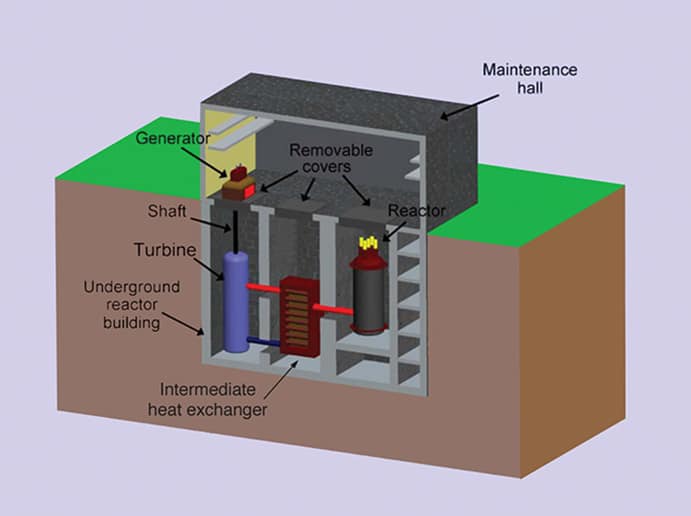While pressurised water reactors cooled by light water (LPWRs) are likely to be the first small modular reactors (SMRs) deployed commercially, they are by no means the only type of SMR under development. Several research groups and private companies are also looking at alternative nuclear technologies for their potential in smaller reactors.
These alternative reactors generally belong to the category known as Generation IV. Because they are at an earlier stage of development, they are unlikely to be ready for deployment until the 2030s or 2040s.

Stable salt reactor
One reactor under development by UK private company Moltex Energy is called the stable salt reactor (SSR). As the name implies, this technology uses a flowing molten salt as a key component of the reactor, but it is quite different from the liquid fluoride thorium reactor (LFTR) normally associated with molten salt technology.
While an LFTR uses nuclear fuel dissolved in the molten salt and flowing around the reactor, in the SSR the fuel is stationary and held in fuel rods as in a conventional reactor. The fuel – based on typical low-enriched uranium, or even derived from spent fuel currently treated as waste – is dissolved in a molten salt, which Moltex claims improves the burn-up rate. The fuel rods are submerged in a different molten salt, which acts as the primary coolant in the reactor. One important factor in the safety of the SSR is that fission products caesium and iodine, which are produced in gaseous form in water-cooled reactors, remain bound in non-volatile salts within the fuel assembly.
This coolant salt is not pressurised and does not react with air or water, giving it an advantage over molten alkali metals used as coolant in breeder reactors. This, Moltex said, has two advantages: it removes potential hazards and avoids costly pressure vessels requiring specialist foundries, making the SSR more suitable for production in factories.
The output of an SSR can be between 150MWe and 1.5GWe, depending on the size of the reactor core; as the core is modular, multiple modules can be added to produce the required power.
U-Battery
Another UK design comes from U-Battery. This is developing a concept that originated from research at the University of Manchester, the Dalton Institute and the Technology University of Delft in 2008.
The U-Battery is a type of gas-cooled reactor known as the pebble bed. Rather than having its fuel enclosed in rods, its core is filled with spherical fuel pellets known as TRISO (tristructural-isotropic) fuel. Just under 1cm in diameter, these have a kernel of uranium surrounded by a layer of low-density carbon, which is itself enclosed in silicon carbide and an outer layer of high-density carbon.




April 1886: the Brunkebergs tunnel
First ever example of a ground source heat pump?